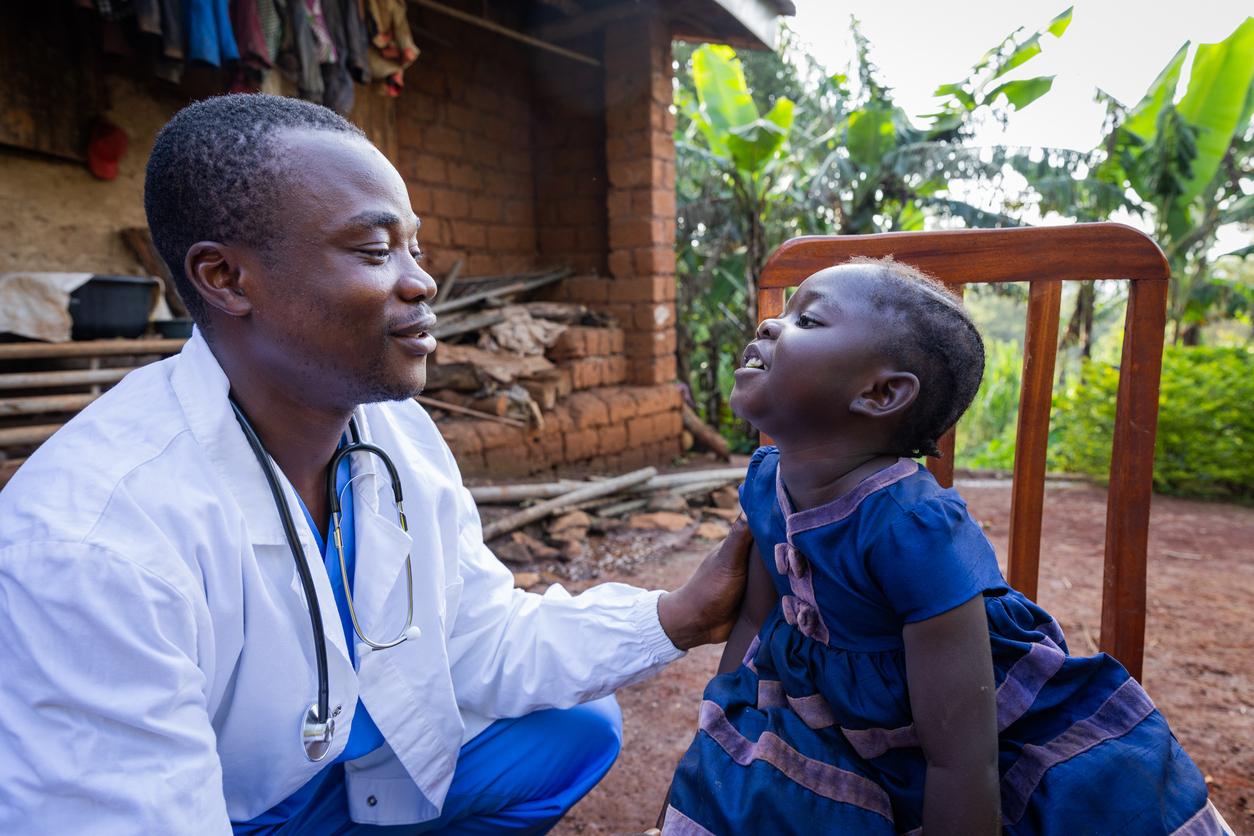A randomized trial conducted in Burkina Faso found that administration of the antibiotic azithromycin to infants during routine healthcare visits had no impact on mortality, an international team of researcher reported yesterday in the New England Journal of Medicine.
The trial is the latest in a series that have investigated the impact of preventive azithromycin administration on children in parts of Africa with high childhood mortality rates. In one of the largest, the MORDOR trial, mass administration of the antibiotic every 6 months to children under 5 in selected villages was associated with a 14% reduction in mortality in Niger, Malawi, and Tanzania—with the largest impact (25%) seen in children ages 1 to 5 months.
The results from that trial and two others prompted the World Health Organization to issue conditional guidelines in 2020 recommending twice-yearly mass distribution to infants ages 1 to 11 months—the most vulnerable population—in region with high rates of childhood mortality.
But subsequent studies have produced mixed results, with some showing similar outcomes and others finding no impact on mortality. There have also been concerns about the potential impact of mass azithromycin administration on antibiotic resistance.
The investigators for the present trial, which targeted infants ages 5 to 12 weeks of age, say their outcome suggests there may be differences between community-wide administration of azithromycin and individual-level treatment.
No impact on mortality, hospitalization, or sick-child visits
For the trial, a team of researchers from the University of California, San Francisco (UCSF) and the Centre de Recherche en Sante de Nouna in Burkina Faso recruited children from three areas of Burkina Faso, a country with higher infant mortality rates than Niger and Tanzania but where pediatric vaccine coverage is reportedly high. The 5- to 12-week age range was chosen to cover the 8-week vaccination visit in Burkina Faso's childhood immunization schedule.
One of the aims of the trial was to see if targeting azithromycin administration to infants at routine clinic visits has a similar mortality effect as observed in the MORDOR trial, without the resources and coordination that are required for mass administration.
"Going out and treating an entire community at the same time [with azithromycin] is really very resource intensive, and very expensive," lead study author Catherine Oldenburg, PhD, MPH, of UCSF's Francis I. Proctor Foundation, told CIDRAP News. "So this study was interested in answering the question about targeting azithromycin to infants at a health system contact point, where we're already seeing them for a well-child or vaccine visit."
In addition, Oldenburg explained, more targeted treatment could also mean less selection pressure for antibiotic resistance. "Giving kids a dose of azithromycin on a rolling basis would hypothetically lead to less selection for resistance compared with treating an entire population of children under 5," she said.
The enrolled infants were randomly assigned 1:1 to receive a single dose of oral azithromycin or placebo. The primary end point was death from any cause before 6 months of age. Secondary end points included caregiver-reported hospitalization and sick-child clinic visits.
Giving kids a dose of azithromycin on a rolling basis would hypothetically lead to less selection for resistance compared with treating an entire population of children under 5.
A total of 32,877 infants were enrolled and randomized, with 16,416 infants (median age, 6.6 weeks, 49% female) assigned to the azithromycin group and 16,461 (median age, 6.7 weeks, 49.4% female) to the placebo group. Among infants enrolled in the trial, 99.9% received azithromycin or placebo as assigned, and more than 95% of infants in each group were included in the final analysis.
Overall, 82 infants (0.52%) in the azithromycin group and 75 in the placebo group (0.48%) died before 6 months of age (absolute difference, 0.04 percentage points), corresponding to a hazard ratio of 1.09 (95% confidence interval [CI], 0.80 to 1.49). No evidence was found of azithromycin having a mortality effect on any prespecified subgroups.
The percentage of infants who were hospitalized was 1.2% in both groups (relative risk, 0.97; 95% CI, 0.79 to 1.19), and 36.9% of infants in the azithromycin group attended a primary healthcare facility for a sick-child visit before 6 months of age, compared with 36.4% in the placebo group (relative risk, 1.02; 95% CI, 0.98 to 1.06).
"Overall, the evidence from our trial does not support individual treatment of infants with azithromycin as an intervention to reduce childhood mortality," Oldenburg and her colleagues wrote.
Spillover effects
The investigators theorize that the outcome of the trial may have differed from MORDOR and other previous trials in part because it relied on clinic-based recruitment, and children recruited from clinics are likely to have better access to healthcare and therefore be healthier, and at a reduced risk of mortality, than children in the general community. The trials that have assessed mass administration of azithromycin, on the other hand, enrolled children from the general community, who may be less healthy and more vulnerable.
But they also say there may be another reason individual-level treatment with azithromycin didn't produce the same effect as mass administration. While Oldenburg says it's not entirely clear why mass distribution of azithromycin has reduced childhood mortality in some trials, it may not be by treating individual bacterial infections but rather through a "spillover effect."
"Perhaps, in order for azithromycin to have a protective effect for mortality, there has to be a reduction in transmission of something," she said. "We don't know exactly what that is, but if you're treating an individual child, and you're not treating everybody else in their community, then that child may just very quickly get reinfected from interaction with a sibling or other kids in the neighborhood."
Oldenburg says studies are ongoing to see if there is a way to replicate the MORDOR results with a more targeted, antibiotic-sparing approach.
"Finding that balance is a priority," she said.
Perhaps, in order for azithromycin to have a protective effect for mortality, there has to be a reduction in transmission of something.
























